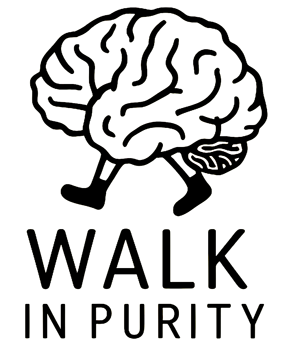Introduction
Overcoming pornography addiction is a challenging journey, but incorporating positive habits into your daily routine can make a significant difference. One effective strategy is habit stacking, which involves building new habits by linking them to existing ones. This technique can be a powerful tool for anyone looking to replace their addictive behaviors with healthier activities, such as praying more, attending support meetings, checking in with recovery buddies, or engaging in other supportive practices. This blog post will delve into the concept of habit stacking and how you can use it to combat pornography addiction.
Understanding Habit Stacking
What is Habit Stacking?
Habit stacking is a concept popularized by author James Clear in his book “Atomic Habits.” The idea is simple: rather than trying to form new habits in isolation, you link them to existing routines. This way, the new habit becomes part of an established pattern, making it easier to remember and maintain.
The Science Behind Habit Stacking
The human brain is wired to follow patterns. When you perform a task repeatedly, it becomes ingrained in your neural pathways, making it automatic. By attaching a new habit to an existing one, you leverage these established neural pathways, increasing the likelihood that the new behavior will stick.
Why Habit Stacking Works
Habit stacking works because it reduces the mental effort required to form a new habit. Instead of relying on willpower or motivation, which can be fickle, you create a trigger-action plan. The existing habit serves as the trigger for the new action, ensuring a smoother transition and greater consistency.
Applying Habit Stacking to Overcome Pornography Addiction
Identifying Key Habits
The first step in habit stacking is to identify the key habits you want to develop. For someone struggling with pornography addiction, these might include:
- Praying More: Developing a stronger spiritual practice can provide comfort and strength.
- Attending Meetings: Regularly attending support groups or therapy sessions can offer crucial support.
- Checking in with Recovery Buddies: Maintaining regular contact with accountability partners can help keep you on track.
- Engaging in Healthy Activities: Replacing screen time with physical exercise, hobbies, or other productive activities can reduce temptation.
Finding Existing Habits to Stack Onto
Next, identify existing habits that can serve as triggers for your new behaviors. These should be routines you perform consistently every day, such as:
- Waking Up: Your morning routine can set the tone for the rest of the day.
- Meals: Breakfast, lunch, and dinner are regular, predictable events.
- Going to Bed: Your nighttime routine is a natural point to wind down and reflect.
- Daily Commutes: If you travel to work or school, this time can be used productively.
Creating Your Habit Stacks
Now, combine your new habits with your existing ones. Here are some examples:
Morning Routine
- Wake Up + Prayer: As soon as you wake up, spend time in prayer or meditation before getting out of bed.
- Brush Teeth + Motivational Reading: While brushing your teeth, read a passage from a motivational book or scripture.
- Breakfast + Meeting Planning: During breakfast, plan out your support meetings or therapy sessions for the week.
Throughout the Day
- Lunch + Check-in: After finishing lunch, send a quick text to your recovery buddy to check in.
- Afternoon Break + Exercise: Use your afternoon break to do a quick workout or go for a walk.
- Commute Home + Podcast: Listen to a recovery-focused podcast during your commute home.
Evening Routine
- Dinner + Gratitude Journal: After dinner, spend a few minutes writing in a gratitude journal.
- Pre-Bedtime Routine + Reflection: Before going to bed, spend ten minutes reflecting on your day and setting intentions for tomorrow.
Ensuring Consistency
Consistency is key to making habit stacking effective. Here are some tips to help you stay on track:
- Start Small: Begin with one or two habit stacks to avoid feeling overwhelmed.
- Use Reminders: Set alarms or use sticky notes to remind you of your new habits.
- Track Your Progress: Keep a habit tracker or journal to monitor your consistency and celebrate your successes.
- Be Patient: It takes time to form new habits. Be patient with yourself and stay committed.
Incorporating Supportive Behaviors
Praying More
Developing a regular prayer routine can provide spiritual strength and clarity. Here’s how to incorporate prayer into your daily habits:
- Morning Prayer: Start your day with a prayer of gratitude and guidance.
- Mealtime Prayers: Use meal times as opportunities to pray and reflect.
- Evening Reflection: End your day with a prayer, reflecting on your progress and seeking strength for tomorrow.
Attending Meetings
Support groups and therapy sessions are crucial for recovery. Use habit stacking to ensure you attend these regularly:
- Schedule Consistency: Link your meeting times to other regular activities, such as your lunch break or evening commute.
- Prepare in Advance: Use the time before your meeting to prepare mentally, review notes, or reflect on what you want to discuss.
Checking in with Recovery Buddies
Regular communication with accountability partners can keep you grounded. Here’s how to make it a habit:
- Morning Check-In: Send a quick text or voice message to your recovery buddy each morning.
- Post-Meal Updates: Use the time after meals to update your buddy on your progress and any challenges.
- Evening Wrap-Up: End your day with a brief check-in to reflect on your successes and areas for improvement.
Engaging in Healthy Activities
Replacing screen time with productive activities can help reduce temptation. Here are some ideas:
- Exercise: Link workouts to existing habits, like doing a quick exercise routine after your morning shower or before dinner.
- Hobbies: Dedicate time to hobbies you enjoy, such as reading, painting, or playing a musical instrument.
- Social Activities: Spend time with friends and family, making social interaction a regular part of your routine.
Overcoming Challenges
Dealing with Setbacks
Setbacks are a natural part of the recovery process. Here’s how to handle them:
- Stay Positive: Focus on your progress rather than your mistakes.
- Learn from Experience: Analyze what led to the setback and adjust your habits accordingly.
- Seek Support: Reach out to your recovery buddies, support group, or therapist for guidance and encouragement.
Maintaining Motivation
Staying motivated can be challenging, especially in the face of setbacks. Here are some tips:
- Set Clear Goals: Define what you want to achieve and break it down into manageable steps.
- Celebrate Small Wins: Acknowledge and celebrate your progress, no matter how small.
- Visualize Success: Regularly visualize yourself overcoming your addiction and living a healthier, happier life.
Staying Flexible
Life is unpredictable, and it’s important to stay flexible with your habit stacks. Here’s how:
- Adapt to Changes: If your routine changes, adjust your habit stacks accordingly.
- Be Open to Experimentation: Try different habit stacks to see what works best for you.
- Stay Committed: Even if you miss a day, get back on track as soon as possible.
Long-Term Strategies for Success
Continuous Learning
Continual learning and self-improvement are key to long-term success. Here’s how to keep growing:
- Read Books: Explore books on habit formation, addiction recovery, and personal development.
- Attend Workshops: Participate in workshops or seminars to gain new insights and skills.
- Seek Mentorship: Find mentors who can offer guidance and support on your journey.
Building a Support Network
A strong support network can make a significant difference in your recovery. Here’s how to build one:
- Join Support Groups: Connect with others who are going through similar experiences.
- Engage with Community: Participate in community activities and build relationships with supportive individuals.
- Maintain Regular Contact: Keep in touch with your support network regularly to stay connected and motivated.
Practicing Self-Care
Taking care of yourself is essential for maintaining your progress. Here are some self-care practices to incorporate:
- Mindfulness and Meditation: Practice mindfulness and meditation to stay present and reduce stress.
- Healthy Eating: Maintain a balanced diet to support your physical and mental well-being.
- Adequate Sleep: Ensure you get enough rest to keep your energy levels up and improve your overall health.
Conclusion
Overcoming pornography addiction is a challenging but achievable goal. By incorporating habit stacking into your daily routine, you can replace addictive behaviors with positive, supportive habits. Whether it’s praying more, attending support meetings, checking in with recovery buddies, or engaging in healthy activities, habit stacking can help you create a structured, consistent approach to recovery. Remember to stay patient, stay flexible, and seek support when needed. With dedication and the right strategies, you can build a healthier, addiction-free life.


Leave a Reply